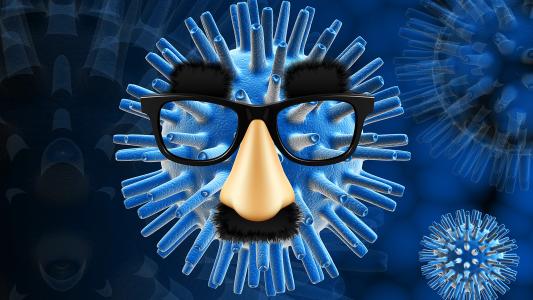University of Pennsylvania researchers have developed a chewing gum that may help reduce the spread of COVID-19 by neutralizing viruses inside the mouth.
ACE2 in the hole: A protein called ACE2 plays a pivotal role in the spread of COVID-19. It’s found on the outside of many cells in our bodies, and the coronavirus’ spike protein binds to it to gain entry to those cells — if the spike protein is a key, ACE2 is the lock.
Past research has shown that injections of ACE2 can reduce the viral load in people with severe cases of COVID-19. The viruses’ spikes bind to these free-floating proteins, instead of the ones on our cells.
The groundwork: Prior to the pandemic, lead researcher Henry Daniell had already developed a way to get lettuce plants to grow ACE2, which he needed for his hypertension research.
The lettuce could then be freeze-dried and ground into a powder, giving Daniell a cheaper source of the protein than the traditional production process.
He had also helped develop a chewing gum that contained plant-grown proteins designed to prevent the formation of plaque on teeth.
The cinnamon-flavored gum contains ACE2 proteins grown in lettuce.
When the coronavirus hit, he got the idea to combine these two inventions. He reached out to Ronald Collman, a Penn Medicine virologist, to see if a chewing gum infused with his ACE2 proteins might be able to help reduce the spread of COVID-19.
“Henry contacted me and asked if we had samples to test his approach, what kind of samples would be appropriate to test, and whether we could internally validate the level of SARS-CoV-2 virus in the saliva samples,” Collman said.
Sticky situation: Together, they created a cinnamon-flavored gum containing the lettuce-grown ACE2 proteins. They then mixed a powdered form of the gum with saliva samples from people infected with COVID-19.
Some of the plant-grown ACE2 proteins bound to the virus’ spike protein, neutralizing it directly. Others blocked up the human ACE2 receptors on the patients’ cells. This prevented the spike protein from entering the cells — like trying to unlock a door with another key broken off in the lock.
As a result, the viral load in the saliva samples treated with the gum was reduced by 95% compared to samples mixed with a placebo (just gum without the proteins).
The researchers say hundreds of millions of pieces of the chewing gum could be produced in three months.
Chew on this: Penn’s chewing gum may be useful for reducing the spread of COVID-19.
According to the researchers, it tastes just like regular gum, is effective for five hours, and remains stable at room temperature. Daniell also told Newsweek it’d be possible to produce “hundreds of millions” of pieces in three months.
While it wouldn’t stop anyone from catching COVID-19, the gum could be distributed to people who visit a hospital, doctor’s office, or other public setting — that could prevent people who don’t yet know they’re infected from spreading COVID-19 to others.
The cold water: While the idea of chewing gum reducing the spread of COVID-19 is certainly appealing, researchers still have a lot of questions to answer before we can start chomping our way out of this pandemic.
Those include figuring out whether the gum is as effective at reducing viral load in an actual mouth, which contains bacteria and other microbes, as it is in the lab.
“We already use masks to reduce the chance of transmission. This gum could be an additional tool in that fight.”
Henry Daniell
More importantly, they don’t know whether reducing viral load in the mouth actually affects the transmission of COVID-19 between people. Virus particles in aerosols and droplets exhaled from the lungs, throat, and nose may be considerably more important.
We might not have to wait long for answers to those questions, though, as the researchers are already in talks with the FDA about launching a clinical trial of their chewing gum.
“We are already using masks and other physical barriers to reduce the chance of transmission,” Daniell said. “This gum could be used as an additional tool in that fight.”
We’d love to hear from you! If you have a comment about this article or if you have a tip for a future Freethink story, please email us at tips@freethink.com.






